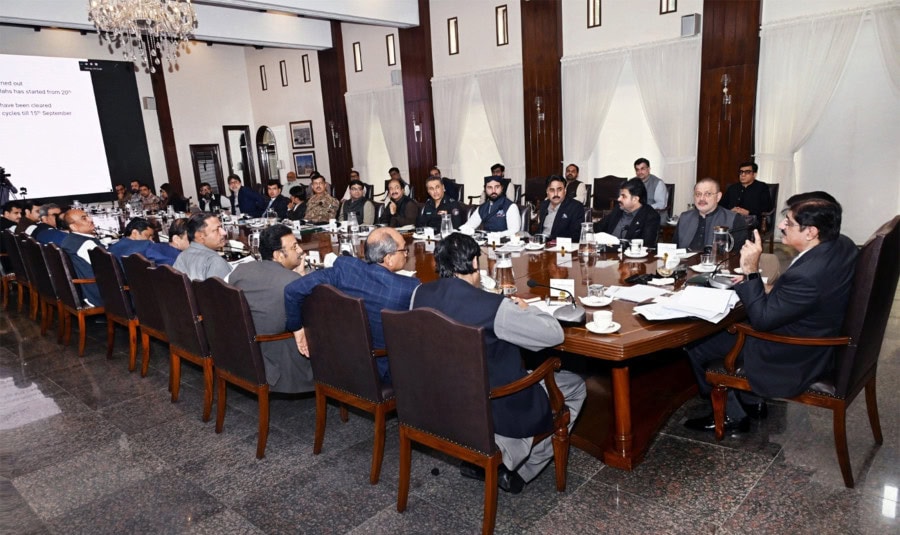With monsoon rains forecast to hit Sindh in the coming weeks, Chief Minister Syed Murad Ali Shah has directed all provincial departments to prepare for potential flooding, activating emergency measures to safeguard vulnerable areas and populations.
Chairing a high-level meeting in Karachi, the chief minister underscored the urgency of readiness across all administrative levels, given projections of higher-than-average rainfall in the southern parts of the province.
The meeting was attended by key provincial ministers, including Sharjeel Inam Memon, Saeed Ghani, Nasir Hussain Shah, Jam Khan Shoro, and Zia Lanjar, alongside Karachi Mayor Murtaza Wahab, top law enforcement officials, meteorologists, and representatives from the armed forces, disaster management, KE, Water Board, and Solid Waste Management Board.
According to the Pakistan Meteorological Department, a “heat-low” pressure system is developing earlier than usual over southern Pakistan. Rainfall in Sindh is expected to be normal to slightly above normal, with southern districts potentially seeing a 20 to 30 percent increase.
The Indus River and hill torrents pose a serious flooding threat in the Lower Indus Basin, especially around drainage-sensitive areas like Manchhar Lake and Hamal Lake, where historical flood data suggests infrastructure strain during peak water inflow.
In Karachi, authorities began cleaning stormwater drains on June 20, with operations scheduled through September 15. All major choking points have reportedly been cleared, and special attention is being given to underpasses at Tariq Road, KPT, Submarine Chowk, and Mehran. However, the city still lacks the drainage capacity to handle intense downpours exceeding 45 mm per hour, a recurring issue aggravated by plastic waste and illegal encroachments—particularly in areas like District Korangi.
The Solid Waste Management Board has committed to deploying additional machinery and personnel during the rainy season. Workers will be equipped with rain gear, and public awareness campaigns are being launched to guide residents on safety measures during emergencies.
Officials also pledged to maintain uninterrupted garbage collection and disposal throughout the monsoon. Meanwhile, the Irrigation Department warned that the Lower Indus region remains at high risk due to its location at the tail-end of Pakistan’s river system, where peak flood intensity is often observed. Alongside the Indus River, seasonal torrents and heavy monsoon showers could result in urban flooding, particularly in Sindh, Punjab, KP, and Azad Jammu and Kashmir. Flash floods remain a pressing concern in hilly areas and densely populated cities. To manage water-logging and salinity, the provincial government is relying on SCARP (Salinity Control and Reclamation Program) projects, which feature an array of drainage systems aimed at lowering underground water tables and reducing surface salinity. Dozens of pumping stations have been activated to assist with water evacuation, and repair works continue on infrastructure damaged during the catastrophic 2022 floods.
Murad Ali Shah emphasized the need to prioritize preventive measures over reactive ones, urging departments to complete drain de-silting, reinforce embankments, and ensure uninterrupted power supply to drainage systems. With flood risks looming and the memory of recent disasters still fresh, Sindh’s leadership is pushing to bolster its preparedness ahead of another uncertain monsoon season.



















